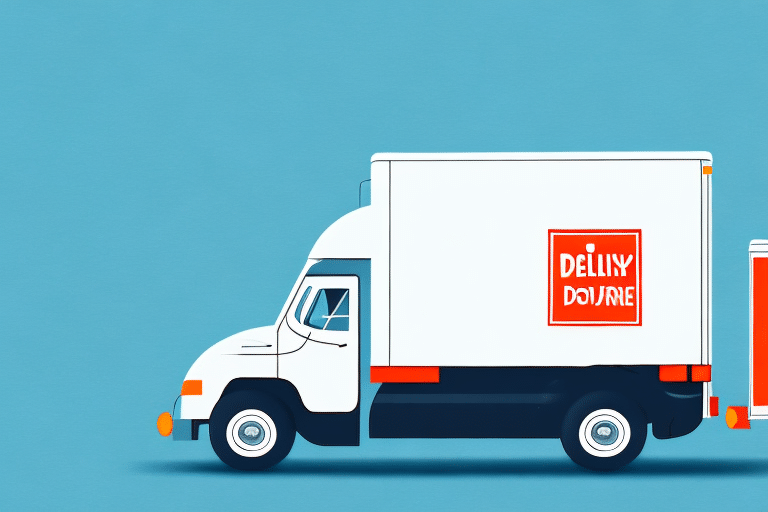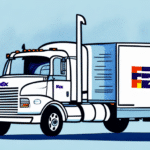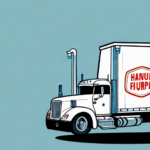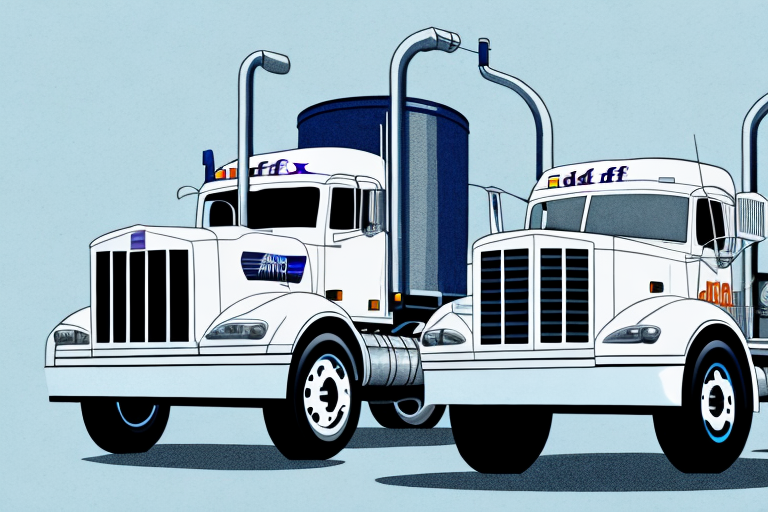Understanding Delivery Surcharges: What You Need to Know
Delivery surcharges are additional fees added to the cost of shipping and delivery. These fees are typically applied on top of the base shipping charge to cover extra costs associated with transporting packages. In this article, we delve into the intricacies of delivery surcharges, explore the various types, examine how they differ across industries, and provide strategies for managing them effectively.
The Definition of Delivery Surcharges and Their Purpose
Delivery surcharges are supplemental fees imposed by shipping companies to offset additional costs linked to shipping packages. These costs may encompass fuel surcharges, insurance, handling fees, and other miscellaneous expenses. Additionally, certain surcharges apply to specific delivery types, such as hazardous materials or oversized and heavy packages, which require extra resources for safe handling and transportation.
It's crucial to recognize that delivery surcharges are not always transparent and can vary significantly between shipping providers. Some companies incorporate these fees into their overall shipping costs, while others itemize them separately on invoices. For businesses and consumers alike, meticulously reviewing shipping costs and understanding any additional fees is essential to accurately assess the total cost of delivery.
Common Types of Delivery Surcharges
Several delivery surcharges may be encountered when shipping and receiving packages. Familiarizing yourself with these surcharges can aid in better managing your shipping expenses:
- Fuel Surcharge: An additional fee added to the base shipping charge to cover fuel costs. The amount varies based on the distance, package weight, and current fuel prices.
- Oversize Package Surcharge: Applied when a package exceeds the shipping company's weight or dimension limits, covering the extra handling and transportation costs.
- Residential Delivery Surcharge: Charged for deliveries to residential addresses as opposed to commercial ones, reflecting the additional cost of navigating residential areas.
- Remote Area Surcharge: Imposed when the delivery address is in a remote or hard-to-reach location, accounting for the added effort and resources required.
- Saturday Delivery Surcharge: Applied for deliveries scheduled on weekends, covering the extra operational costs associated with weekend services.
Understanding these surcharges enables both businesses and consumers to anticipate and manage the additional costs associated with various shipping scenarios.
Delivery Surcharges Across Different Industries
Delivery surcharges can vary widely depending on the industry. For instance, shipping hazardous materials incurs higher surcharges compared to standard items due to the stringent safety and handling requirements. Similarly, oversized packages, such as furniture, attract higher surcharges compared to smaller, less bulky items like clothing.
Another critical factor influencing surcharges is the destination of the package. Shipping to remote or international locations often involves higher surcharges due to the increased time, resources, and potential customs fees involved. Understanding the specific surcharges applicable to your industry and destinations is vital for accurately pricing products and maintaining competitive shipping costs.
Impact of Destination on Surcharges
Shipping to remote areas or internationally can introduce additional surcharges such as customs duties, taxes, and extended delivery times. For example, international shipments may require customs clearance fees and other regulatory costs, which can significantly affect the total shipping expense.
Factors Influencing Delivery Surcharges
The amount of delivery surcharges applied to a shipment is determined by several factors:
- Distance: Longer distances increase transportation costs, leading to higher surcharges.
- Package Weight and Size: Heavier and bulkier packages require more handling and resources, resulting in higher surcharges.
- Type of Delivery: Deliveries to residential addresses often incur higher surcharges than to commercial locations.
- Delivery Speed: Expedited or same-day delivery options typically have higher surcharges due to the urgency and additional resources required.
- Destination Country: International shipments may involve extra charges such as customs fees and taxes.
Understanding these factors helps in forecasting potential surcharges and making informed decisions about shipping options.
The Role of Distance in Delivery Surcharges
Distance plays a pivotal role in determining delivery surcharges. The greater the distance a package needs to travel, the higher the transportation and fuel costs, which are reflected in increased surcharges. However, some shipping companies offer volume discounts for bulk shipments, potentially reducing surcharges for long-distance deliveries.
Additionally, the choice of delivery service significantly impacts surcharges. Expedited services like same-day delivery come with higher surcharges due to the need for immediate processing and transportation. In contrast, standard delivery services may have lower surcharges but extend delivery times.
Properly measuring and weighing packages is essential to ensure accurate surcharges are applied, avoiding unexpected costs and optimizing shipping budgets.
Strategies to Minimize Delivery Surcharges
Reducing unnecessary surcharges can lead to significant savings on shipping costs. Here are several strategies to consider:
- Use Proper Packaging: Ensuring packages are well-packaged can prevent damage during transit and avoid additional handling surcharges.
- Optimize Package Weight and Size: Keeping packages within the weight and size limits set by shipping companies can help avoid oversize or overweight surcharges.
- Ensure Address Accuracy: Accurate shipping addresses prevent additional surcharges related to incorrect or difficult-to-reach destinations.
- Plan and Schedule Shipments: Scheduling shipments in advance can help avoid rush fees and surcharges associated with last-minute shipping.
Implementing these practices not only reduces surcharges but also enhances overall shipping efficiency and cost-effectiveness.
Free Shipping vs. Delivery Surcharges: Weighing the Pros and Cons
Offering free shipping versus applying delivery surcharges each has its advantages and drawbacks:
- Free Shipping: Can attract more customers and boost sales, but may erode profit margins, especially for small businesses.
- Delivery Surcharges: Allow businesses to recover shipping costs while keeping product prices competitive, but may deter price-sensitive customers.
Balancing these options involves considering the type of products sold, customer expectations, and overall business model. For example, offering free shipping on orders above a certain amount can incentivize larger purchases while mitigating shipping costs.
Understanding Hidden Fees in Delivery Surcharges
Beyond the visible delivery surcharges, hidden fees can significantly impact the total shipping cost:
- Fuel Surcharges: These fluctuate with fuel prices and can vary widely, affecting the overall cost of shipping.
- Special Handling Fees: Charges for handling fragile or oversized items often aren't immediately apparent.
It's essential to read the fine print and understand all potential fees to accurately estimate shipping costs. For instance, some shipping companies may have additional charges for handling specific types of packages or offering particular delivery speeds.
Impact of Fuel Prices on Surcharges
Fuel prices directly influence fuel surcharges, which can fluctuate based on market conditions. Staying informed about current fuel trends can help anticipate changes in shipping costs.
Negotiating Delivery Surcharges with Shipping Companies
Businesses can negotiate reduced surcharges by establishing strong partnerships with shipping companies and committing to consistent shipping volumes. Shipping providers may offer lower surcharges to retain business and ensure a steady stream of shipments. Key negotiation strategies include:
- Consistent Shipping Volume: Committing to regular shipments can make your business a valuable client.
- Long-Term Contracts: Entering into extended agreements may provide leverage for better rates.
- Leveraging Competitive Offers: Using quotes from multiple shipping providers can strengthen your negotiating position.
Carefully evaluating the benefits and potential costs of negotiated rates ensures that the terms are favorable for your business.
Future Trends in Delivery Surcharges
The landscape of delivery surcharges is evolving, influenced by trends in e-commerce and advancements in logistics:
- Increased Automation: Automation in shipping operations can streamline processes, potentially reducing surcharges.
- Sustainable Shipping Practices: Growing emphasis on eco-friendly shipping may introduce new types of surcharges or incentives.
- Dynamic Pricing Models: Shipping companies may adopt more flexible pricing strategies based on real-time data and demand.
Staying abreast of these trends helps businesses anticipate changes in shipping costs and adapt their strategies accordingly.
Case Studies: Effective Management of Delivery Surcharges
Several companies have successfully navigated delivery surcharges through innovative strategies:
- Shipping Consolidation: Partnering with consolidators to pool shipments can reduce per-package surcharges.
- Automated Systems: Implementing automated shipping systems minimizes handling errors and improves efficiency, lowering surcharges.
These case studies demonstrate the importance of proactive management and strategic partnerships in controlling delivery costs.
Customer Perception of Delivery Surcharges and Its Impact on Sales
Customers' views on delivery surcharges can significantly influence purchasing decisions. Transparent and fair shipping costs enhance customer trust and satisfaction, whereas hidden or excessive surcharges may deter potential buyers. Key considerations include:
- Transparency: Clearly disclosing all shipping fees during the checkout process builds trust.
- Option Variety: Providing multiple shipping options with varying surcharges allows customers to choose based on their preferences and budget.
Positive customer perception of delivery costs can lead to increased sales and repeat business.
Best Practices for Communicating Delivery Surcharges to Customers
Effective communication of delivery surcharges is crucial for maintaining customer trust and satisfaction. Implement the following best practices:
- Provide Estimated Shipping Costs: Displaying estimated shipping fees during the checkout process helps customers make informed decisions.
- Be Transparent: Clearly explain which surcharges apply and the reasons behind them.
- Offer Multiple Shipping Options: Presenting various shipping choices with different surcharges caters to different customer needs and budgets.
By adopting these practices, businesses can enhance the customer experience while effectively managing shipping costs.
Conclusion: Mastering Delivery Surcharge Management
Delivery surcharges are a critical component of shipping costs that can significantly impact a business's profitability and customer satisfaction. By understanding the different types of surcharges, how they vary across industries, and the factors that influence their rates, businesses can implement strategies to manage these costs effectively. Adopting best practices in communication, negotiating favorable terms with shipping providers, and staying informed about industry trends will empower businesses to optimize their shipping operations, reduce costs, and enhance competitiveness in the market.






















